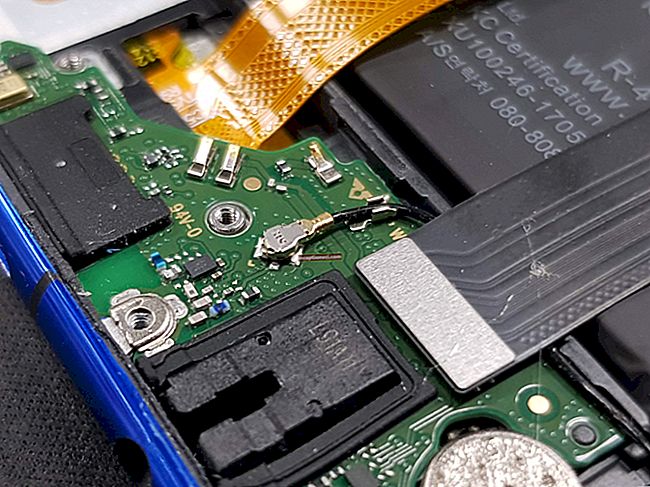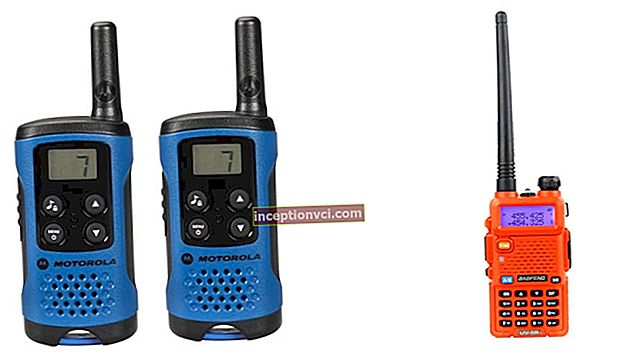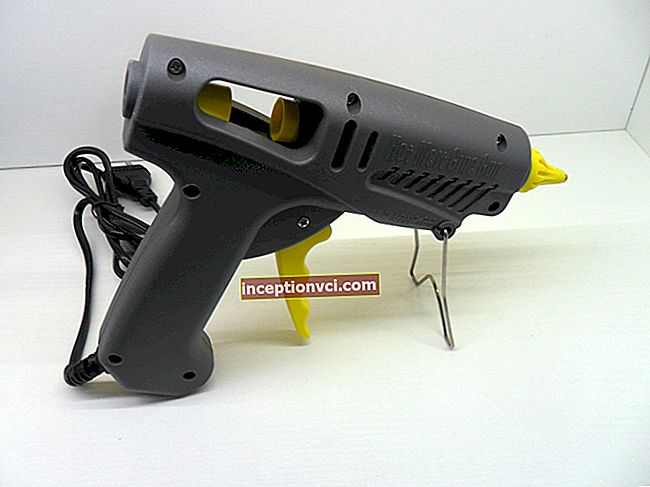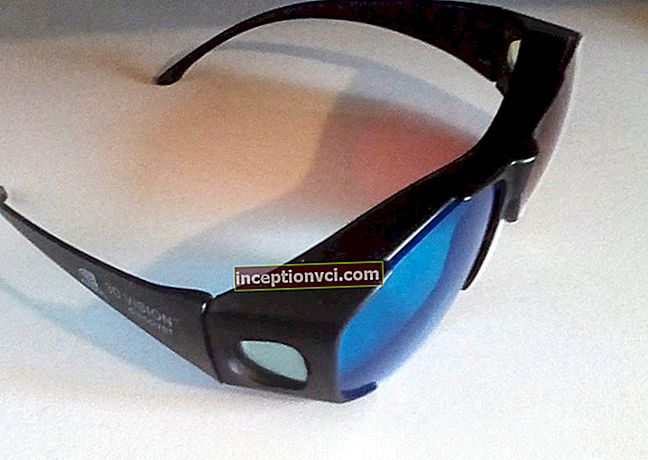Clock is a complex device designed to measure time. Along with meeting the needs for measuring time, they are also an object of decoration, i.e. satisfy aesthetic needs.
In recent years, the equipment of the clockwork has undergone significant changes due to the widespread introduction of microelectronics. In the manufacture of watches, lines of automatic assembly of watch movements using mini-robots are increasingly used. The production of electronic watches is expanding with an increase in functionality. The range of watches is continuously being improved in the direction of increasing their accuracy, increasing the duration of operation without changing the current source (for quartz watches). Much attention is paid to the design of watches, the release of products, responding to today's fashion trends.
Consumer properties of watches and factors that shape them.
The consumer properties of watches include:
- Functional;
- Ergonomic;
- Aesthetic;
- Reliability.
Functional properties of watches are determined by information content, long duration of the course, accuracy and security.
Informativeness - this is the ability to count large and small time intervals. It is determined by the presence of a calendar device showing the day of the week, day, month and year, as well as the presence of a second hand or a second device.
The long running time of the watch is determined by the time it runs from full winding of the spring (lifting the weight, setting the power source) to a complete stop.
The clock accuracy is determined by the daily, average daily, maximum daily rate. The diurnal rate is understood as the error in the readings of the hours per day (s / day), if at the beginning of the day the clock showed a signal of the exact time, then the deviations of their indicators from the exact time at the end of the day are the diurnal rate.
When evaluating watches, the indicators of the average daily rate for the corresponding period of time (for a wristwatch for 4 days) and the maximum of this value for this period are always used. The accuracy of mechanical watches is influenced by the quality of regulation, the caliber (watches of a larger caliber have greater accuracy compared to watches of a small caliber of the same class), a long running time (the longer it is, the higher the accuracy), the number of stones, and the temperature error.
Security - this is the ability to operate the watch in adverse conditions. The watch is produced with shockproof, waterproof, anti-magnetic and other devices.
The ergonomic properties of the watch are determined by:
- Convenience of reading readings (depends on the digitization, number, size and shape of dots and dashes on the dial, its ring, as well as on the shape, size, color of the arrows, etc.);
- Convenience of setting the watch and transferring the hands (determined by the shape and size of the crown, control buttons, as well as the efforts spent on this work);
- Ease of wearing the watch (depends on the design of the ears, strap or bracelet, etc.);
- Convenience of installing the clock at the place of operation (determined by the shape, dimensions of the fastening elements, etc.).
The aesthetic properties of watches are due to:
1.information vulnerability (determined mainly by originality and conformity of style and fashion);
2. rationality of the form (associated with functional, constructive and ergonomic conditioning);
3. the integrity of the composition (characterizes the harmonious unity of shape, size, color, color of watch elements - case, dial, hands and the whole product);
4. perfection of manufacturing performance (ensured by careful application of coating and finishing, clarity of markings, quality of packaging, etc.).
The reliability of watches is characterized by reliability, durability (physical and social), suitability for repair, preservation.
Factors such as design, materials and technology of the manufacturer have a decisive influence on the consumer properties of watches.
By design, the most common are mechanical clocks - pendulum and balance clocks. The mechanism of such a watch consists of main and auxiliary units.
The main nodes include:
- Engine;
- Mechanism for starting the engine and transferring arrows;
- Transfer mechanism;
- Regulator;
- Trigger mechanism;
- pointer mechanism;
The engine drives the clock mechanism. It can be spring and kettlebell. In a spring motor, the source of mechanical energy is a spiral spring. Due to its compactness, the engine is widely used in wrist, pocket and other watches. But as it spins, the force of the spring energy decreases, so such a watch is less accurate than a kettlebell. The kettlebell motor is simple and stable, since the force applied by the weight does not change during its lowering. Such an engine is used in wall and floor clocks.
The mechanism for winding the engine and shifting the arrows are used to set the arrows to the desired position, to wind the engine spring or to raise the weight.
Regulator - this is the main part of the clockwork, which is an oscillating system with a strict oscillation frequency. A pendulum (wall and grandfather clocks) and a balance-spiral (wristwatches, pocket watches, alarm clocks and others) serve as such a regulator in a mechanical clock. By changing the length of the balance-spiral, you can speed up or slow down the alarm clocks.
Transmission mechanism - ensures the transfer of energy from the engine to the entire mechanism.
Trigger mechanism - converts vibrations into uniform rotation of gear wheels. In household watches, an anchor escapement is almost always used. Watches with a free anchor escapement work in different positions, with a non-free one - only in an upright position.
The pointer mechanism transfers movements from the main wheel system to the watch hand. It consists of two toothed pairs that rotate the hands of minutes and hours. The hour hand rotates 12 times slower than the minute hand.
Complementing mechanical watch assemblies - calendar, seconds, anti-magnetic, signaling devices, automatic winding, dial illumination, shockproof system.
According to the principle of operation, electronic watches are subdivided into:
A) electronic and mechanical;
B) electronic
An electronic-mechanical watch has an electronic unit in the device and some units inherent in a mechanical watch. Depending on the design feature, they are:
- Balance sheet;
- Quartz;
- Tuning fork;
In the balance electronic-mechanical watch, the spring motor is replaced by an electronic unit and an electromagnetic system is added. In quartz electronic mechanical watches, the role of the regulator is played by a quartz crystal, in tuning forks - by a tuning fork.
Electronic watches differ from mechanical watches in the following ways:
- They do not need to be started, since the continuation of their course from electric batteries or electric accumulators is a year or more;
- They have increased stroke accuracy due to the stability of the voltage of the current source;
- The use in some cases instead of the dial and hands of digital indication increases the convenience of counting information and so on.
The formation of consumer properties of watches is greatly influenced by the materials used for their manufacture. For the production of watches, metals and alloys are used (steels, alloys of non-ferrous metals - brass, precious metals and their alloys - gold, silver, platinum); plastics (plexiglass, nylon); synthetic ruby stones; watch oils and other materials.
Watchmaking technology consists of the following stages:
1. manufacture of watch parts;
2. their processing and covering;
3. assembly of watches;
Today watch factories have entire automatic lines for the manufacture of parts for watches and their assembly.
The resulting parts can be polished, chrome-plated, gilded, oxidized, silver-plated. The watch assembly sequence is determined by their design. Most of the quality of finished products depends on the quality of technological processes.
Classification and characteristics of the range of watches.
Watches are classified according to the following criteria:
1. by purpose - to display the current time, to measure small intervals of time and special.
2. according to the nature of use and place of installation or method of wearing - for individual (wrist, pocket, ring watches) and collective use (desktop, wall, automobile).
3. by energy source - mechanical and electronic.
4. by the type of oscillatory system - for pendulum, balance, tuning fork, quartz.
5. by caliber - normal (21 - 30 mm), small (13 - 20 mm) caliber.
In addition, the range of watches can be divided according to:
- Stamps;
- Classes of accuracy;
- Shapes and finishes of the body.
Brand is a single name for the products of the respective watch factory.
The shape and finish of the case, dial and hands can be very diverse. They are often produced with soft or hard bracelets. Due to their small size, they are most often made without a second hand. In watches of some brands, a shockproof mechanism, calendar devices, and a waterproof case are used.
Recently, the watch industry has been producing only watches in jewelry design: with filigree cases - bracelets, with bracelets made of jewelry stones, pendant watches.
Men's watches, as a rule, are made with a central second hand, with shockproof equipment; some models - with self-winding springs, signal, stopwatch, calendar device, etc. They can be produced in conventional, dustproof and waterproof housings.
Some watches have adaptations due to different conditions of their use: for amateurs of diving - "Amphibia" watches, for athletes - stopwatches.
Quartz watches play a significant role in the range of electronic mechanical watches. These are watches of different brands. All of them have the inscription "Quartz" on the dial. Such watches are distinguished by high accuracy of movement, ordinary watch glasses in them are replaced by silicate ones, they withstand temperature changes and do not lose transparency.
Electronic wrist watches have a digital indicator board. Men's watches can have many additional functions and protective properties: increased protection against moisture and mechanical shock, the presence of 1 to 4 signaling devices, etc. Women's watches have fewer additional devices. There are factories producing electronic watches for children.
Pocket watches are produced in three brands: "Lightning", "Raketa", "Vostok". It is a mechanical watch by design. Depending on the accuracy, they are divided into 3 classes. The caliber of the watches is 32 and 22 mm, they have 15-23 ruby stones, the cases are chrome-plated or gilded, dials with large numerals. Such a watch is made with a calendar, a signal, a shockproof device, accessories with sticks or a decorative cord.
They also produce small-sized pocket-table clocks of the "Electronics" brand with a sound signal and autonomous power supply.
According to the principle of operation, table clocks are:
a) mechanical;
b) electronic and mechanical;
c) electronic.
Mechanical table clocks are made with a weekly or two-week factory, with calendar equipment, with and without striking.
Alarm clocks are a kind of desk clock. Mechanical watches - alarm clocks are produced in 2 classes of accuracy.First-class alarms are made on 11 stones, the average daily rate is ± 90C, the duration from the second setting is 36 hours; class 2 alarm clocks - on 4 stones, average daily rate ± 120C, duration 36 hours.
Depending on the overall dimensions, alarms are divided into:
- Miniature;
- Small-sized;
- Oversized.
They can have a continuous or a previous discontinuous signal.
Electronic-mechanical and electronic watches are produced in a wide range. They are made in cases of various materials, of various shapes, with autonomous or mains power supply.
Wall clocks are made by:
a) mechanical;
b) electronic and mechanical.
The largest share is occupied by mechanical wall clocks of the following brands: "Mayak", "Yantar". Wall clocks in the old style are in great demand: "walkers", with a cuckoo and others.
The grandfather clock is produced with a pendulum regulator, a weekly winding kettlebell motor and a clock striking mechanism. The watch case 2 m high is decorated with valuable wood species.
The range of watches for measuring short periods of time is represented by stopwatches and chronoscopes. Stopwatches are used in laboratory research, sports competitions, according to the principle of operation, they are mechanical and electronic. Mechanical stopwatches are the most common. They are continuous and discontinuous, simple and complex.
The range of special watches includes:
- Automotive;
- Chess;
- Signal.
They are used to measure time and signal when playing chess, processing photographic materials, cooking food, and are installed in the passenger compartment.
Clock indexing.
A unified digital indexing system has been installed to characterize the watch. The designation of hours includes a single name, and the code of the clock in the form of a fraction, in the numerator of which there is a four-, five-, six- or seven-digit code of the internal design, for example, 1656/1326310.
In the four- and five-digit mechanism cipher, the first two digits (in the six-digit - the first three) indicate the caliber of the mechanism, and the others - the design features of the mechanism or electronic unit.
The mechanism code can be supplemented with some letters and numbers, mainly due to the use of various designs (H, 1H, 2H), modernization (A, B, C), a change in the number of stones during the modernization (the letter K and the number of stones, the difference from the main design), changing the accuracy of the course (P - increased accuracy of the course, 1 - the first and 2-second class of accuracy) and so on.
In the six-digit cipher of the external design of the case, the first two digits (in the seven-digit - three) designate the design features of the case; third (or fourth) - material, type of coating and other areas of the body; the last three digits - the group of the dial and hands is indicated by the specialization of the plant.
Quality control of watches.
In trade, during quality control of watches, they check:
- Appearance;
- The consistency of the shooters;
- The efficiency of the mechanism of the plant and the transfer of arrows;
- Accuracy (daily rate).
In electronic watches, they control the appearance, performance and accuracy. At the same time, all quality indicators are checked without increasing the devices and without opening the mechanism.
There should be no scratches, dents or sharp edges on the watch surface.
Protective and decorative coatings should be applied in a uniform layer. When checking the consistency of the work of the hands, pay attention to the coincidence of the time and minute hands in several positions. The watch winding must be elastic. When the spring is charged, the mechanism should start working after 3 turns of the crown without swinging the watch.
The translation of the arrows should be smooth, without disruptions. The operation of the automatic winding of the watch is checked by three times vigorous shaking of the watch, and the calendar according to the speed of transition of the date or date and day of the week in a watch with a very fast calendar. The transition should take place in zone 12 - the time stamp of the dial scale, with a non-quick-action calendar - in the interval from 22 to 2 hours. The electronic clock should work quickly after replacing the elements or turning them on. The accuracy of the watch should not exceed the standard value. It is determined visually by signals of the exact time and with the help of special devices.
Marking, packaging, transportation and storage of watches.
The watch marking consists of one name, the trademark of the manufacturer, the serial number and the code of the mechanism or electronic unit.
A single name is applied to the front side or dial, the trademark of the enterprise is applied to the mechanism or electronic unit. On the outside of the lid or watch case, the direction of rotation of the keys and buttons is indicated by words or signs.
Depending on the version, the signature is put on the outer surface of the case cover or on the dial of wrist and pocket mechanical watches, as well as on the outer surface of the cover or parts of the external design of electronic watches: "anti-magnetic", "Waterproof".
The dial of wrist and pocket watches can be signed: "Made in Belarus" in Russian or a foreign language and the number of functional stones is indicated.
On the case made of alloys of precious metals there must be a stamp of the Assay Office with an indication of the sample.
The watch has individual packaging, which also includes the watch passport. The passport indicates the main technical data of the watch, operating instructions, 2 coupons for warranty service, information about the watch and its manufacture (name of the enterprise, its address, name and purpose of the watch, designation of NTD, date of issue, watch number, quality control department number, price, content of precious metals), scope of delivery.
When selling watches, the store indicates the date of sale in the passport. From this date the warranty period begins.
Watches in individual packaging are placed in boxes during transportation. A packing list is placed in the boxes along with the boxes, indicating the name of the watch, their number, code, date of packing. Manipulation signs are applied to the boxes.
The watch can be transported by various means of transport. At the same time, it is important to protect watch boxes from mechanical damage and atmospheric precipitation.
The watch can be stored in clean, ventilated rooms at temperatures from 10 to 35 degrees. C. and relative humidity up to 80%. Do not store the watch in the same room with corrosive substances. The watch should not be exposed to direct sunlight.
Watch videos of watches in various interiors









